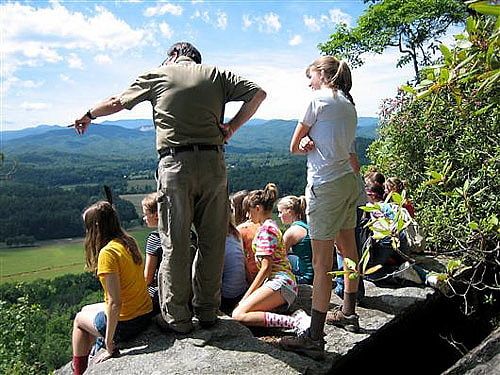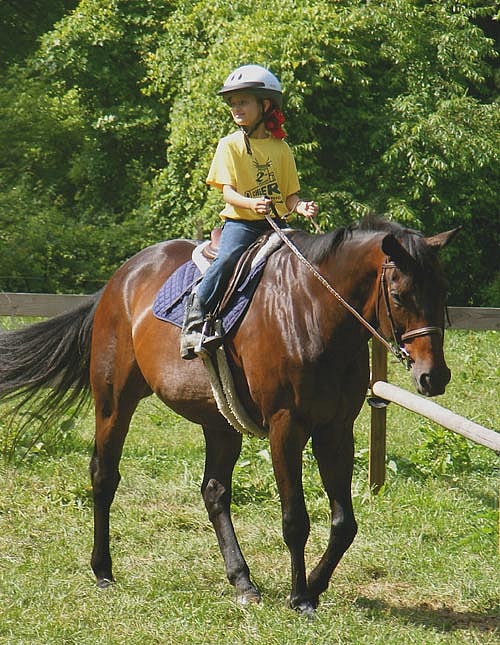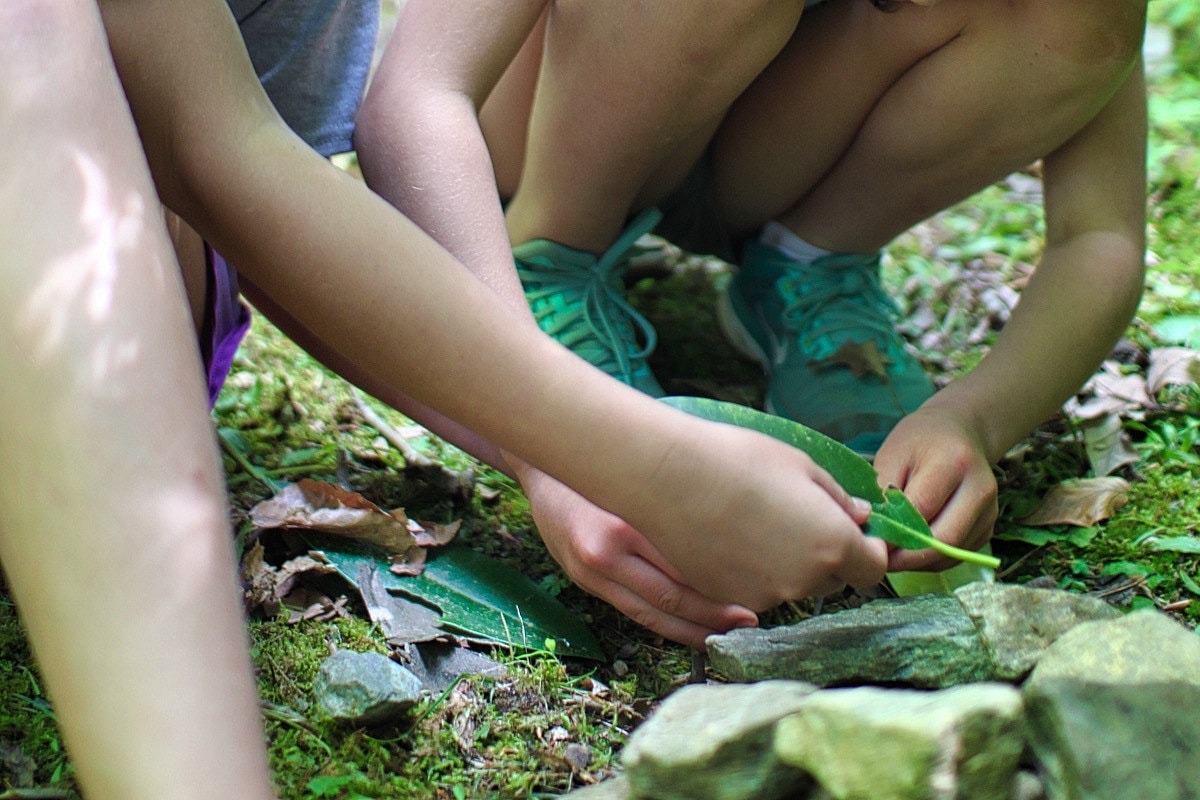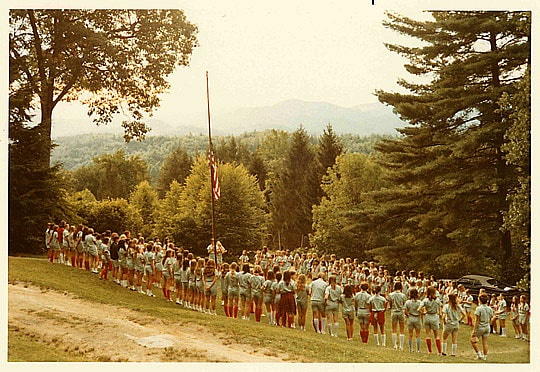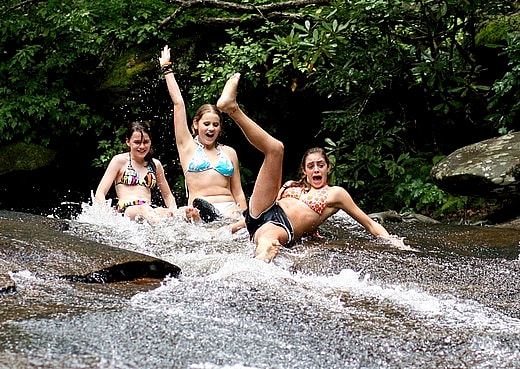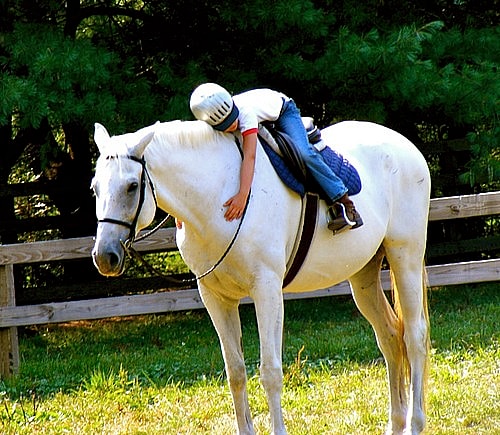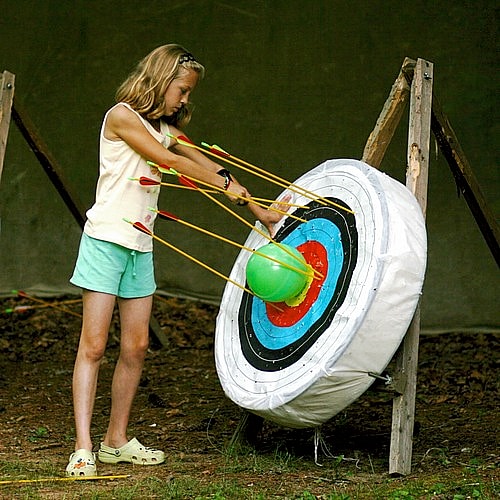The first day of activities this session is full speed ahead with all of the activities ready for action. As we all enjoyed perfect summer weather (warm during the day and cool at night), campers were making pottery, designing weaving projects, and decorating their first pillow case. A few girls also went rock climbing with Clyde, our adventure director. Girls shot arrows and guns, did flips at gymnastics and cannonballs at the lake. Down at the equestrian center, Cara had girls up and riding.
Halfway through the morning at our “Muffin Break,” everyone ran for a treat freshly baked by Liz. We look forward to seeing what flavor she makes for us everyday. Today, lemon.
After rest hour, Jerry, Jessi, Tara and Michelle took a big group of campers on a hike to Kilroy’s Cabin. This is a special hike to a remote part of the Rockbrook property that first takes you to Castle Rock where you can rest and enjoy the unforgettable view of the French Broad river valley. From there, the hike is a bushwhack through the forest with no trail as a guide. Jerry knows the way, but few others can find the old abandoned cabin. Kilroy’s Cabin is the center of an elaborate, and maybe a little bit spooky, story told at camp. I’ll save the details for later, but it involves a nurse with red hair, love, jealousy and a car crash late one stormy night on a slippery bridge. Ooooooooo. (cue eery music!).
For dinner, a classic camp favorite was served— spaghetti with red sauce. In addition to the salad bar, each table had a bowl of fresh tomatoes, cucumbers and basil, and warm bread. It really hit the spot after our action-packed day. But that’s pretty normal for Rockbrook. Camp is action!

